 February 13, 2020 John E. Ross, KD8IDJ, Editor
| ||||||
ARRL Headquarters Will Be Closed for Presidents Day, Monday, February 17. There will be no W1AW bulletin or code practice transmissions on that day. Headquarters will reopen on Tuesday, February 18, at 8 AM EST. ARRL Board of Directors Re-Elects President Rick Roderick, K5UR Meeting January 17 - 18 in Windsor, Connecticut, the ARRL Board of Directors re-elected ARRL President Rick Roderick, K5UR, to a third 2-year term. Roderick outpolled the only other nominee, Pacific
Division Director Jim Tiemstra, K6JAT, 8 - 7. New England Division Vice Director Mike Raisbeck, K1TWF, was elected First Vice President, succeeding Greg Widin, K0GW, who did not seek another term. Raisbeck was the sole nominee. A successor will be appointed to fill the Vice Director seat that Raisbeck has vacated. Bob Vallio, W6RGG, was re-elected as Second Vice President as the only nominee. On a 9 - 6 vote, the Board voted not to re-elect Howard Michel, WB2ITX, as Chief Executive Officer. Michel was in the post for 15 months. Former ARRL Chief Financial Officer and Chief Executive Officer Barry Shelley, N1VXY, has come out of retirement to serve as interim ARRL CEO. He also was elected as Secretary. Shelley was ARRL's CFO for 28 years and served as CEO during 2018 before his retirement, following the departure of former CEO Tom Gallagher, NY2RF. The ARRL Board has appointed a committee to spearhead the search for a new CEO. That panel will screen suitable CEO candidates, presenting three to the Board for consideration. In other action, former ARRL President and IARU Secretary Rod Stafford, W6ROD, was elected International Affairs Vice President, succeeding Jay Bellows, K0QB, who did not seek another term. Also re-elected by the Board were Treasurer Rick Niswander, K7GM, and Chief Financial Officer Diane Middleton, W2DLM. Elected as members of the Executive Committee were Atlantic Division Hudson Division Director Ria Jairam, N2RJ, was elected as a member of the ARRL Foundation Board for a 3-year term. Tim Duffy, K3LR, and Jim Fenstermaker, K9JF, were elected to the Foundation Board for 3-year terms as non-ARRL Board members. Relief From Private Land-Use Restrictions The Ad Hoc Legislative Advocacy Committee provided the Board with drafts outlining three legislative approaches to address relief for radio amateurs facing private land-use restrictions impacting outdoor antennas. The Board signed off on the draft legislative approaches "as presented and possibly modified" and directed the committee "to proceed to obtain congressional sponsorship, employing any of these three approaches and using its best judgment on any alterations or modifications that our advisors or sponsors may require or suggest." HF Band Planning Outgoing chair of the HF Band Planning Committee Greg Widin, K0GW, presented the panel's report and entertained questions. Board members noted that staff turnover and funding limitations at the FCC might impact ARRL's efforts to tweak the bands. The Board agreed that ARRL would post the report and solicit comments from members on it. Contests and Operating Awards
The Board approved raising the maximum number of contacts a Field Day GOTA station can make to 1,000. It amended the ARRL RTTY Roundup rules to add Multi-Two and Multi-Multi categories and to permit multioperator stations to operate for the entire contest period, and it divided entry categories into RTTY only, Digital only (i.e., no RTTY), and Mixed (both RTTY and digital). Matt Holden, K0BBC, presented the DX Advisory Committee report, telling the Board that the panel engaged in extensive discussion on a proposal to change the 5-Band DXCC award from the current required band to offer credit for any five bands. The committee unanimously rejected the proposal. ARRL Elections The Board revised rules governing ARRL Division and Section Manager elections to clarify some terminology, to extend the campaign period from the call for nominations to the deadline for ballots received, and to make other miscellaneous changes. Revisions will become effective by February 15, 2020.
In the interest of "openness and fairness," the Board also approved a measure that would offer candidates and members an opportunity to be present during the counting of ballots. Candidates may also designate one ARRL member to attend as a surrogate if they're unable to observe ballot counting, or to accompany them at the count. The Board further approved an amendment to permit ARRL members, upon petition, to travel at their own expense to witness the counting of ballots from their Division. The Board charged the Programs and Services Committee to consider changes to the ARRL By-Laws that would give members, upon petition, the opportunity to attend the public portion of the Annual Meeting in January. The number of members permitted to attend would be subject to available space and fire code regulations. Public Service Enhancement Working Group Chair, Roanoke Division Director Bud Hippisley, W2RU, reported that with field adoption of the 2019 ARES Plan now under way, the group is putting increased focus on the National Traffic System, including plans for dialog with representatives of Radio Relay International. Reduced Dues for Younger Applicants
The Board approved an amendment giving the CEO discretion to raise the eligibility age for reduced full ARRL membership dues from 22 to 26, provided the rate not be less than one-half of the established rate. In addition, the Board approved the establishment of a reduced-rate, revenue-neutral Life Membership for individuals age 70 or older, with cumulative annual membership of 25 years or more, at an initial rate of $750. Headquarters staff will work out the administrative details of the program, subject to approval of the Administration and Finance Committee. The Board also agreed to allow for a "digital-only" access membership, at the discretion of the CEO, discounted no more than 10% from the established dues rate. Other Business In other business, the Board:
The minutes of the January Annual Meeting of the ARRL Board of Directors are posted on the ARRL website. ARRL Board Grants Awards and Recognitions Meeting January 17 - 18, the ARRL Board of Directors bestowed several honors, awards, and recognitions. The Board conferred:
The Board recognized and thanked the Delaware Valley Radio Association of New Jersey and the Clark County Amateur Radio Club of Vancouver, Washington, for their 90 years of assistance in fulfilling the ARRL mission of, "advancing the art, science, and enjoyment of amateur radio within their community." The Board bestowed the honor of Honorary Vice President on John B. "Jay" Bellows, K0QB, and on Greg Widin, K0GW, in recognition of their outstanding contributions to ARRL and amateur radio. ARRL Creates New HF Band Planning Discussion Group ARRL has created a new HF Band Planning Discussion Group. HF At the Board's January meeting, the committee presented its specific recommendations in graphical form for each HF band and US license class, with the goal of increasing harmony on the HF bands, particularly between CW and digital users. Those responding to the initial call for comments and suggestions are encouraged to cross-post their remarks to the new HF Band Planning Discussion Group. ARRL Podcasts Schedule
Both podcasts are available on iTunes (iOS) and Stitcher (Android) as well as on Blubrry -- On the Air | Eclectic Tech. New ARRL Repeater Directory Now Shipping The 2020 ARRL Repeater Directory® is now shipping. It includes "crowdsourced" listings contributed by users, repeater owners, and volunteer frequency coordinators. This means more listings that are Repeater systems are listed by state/province, city, and operating mode. Digital repeater systems included are System Fusion, D-Star, DMR, NXDN, and P25 systems. It is available in one size -- 6 × 9 inches -- with a convenient lay-flat spiral binding. The cover includes space to personalize your directory, so you can make it yours. Pages of supplemental information include VHF/UHF and microwave band plans, and repeater operating practices. For decades, The ARRL Repeater Directory has been an invaluable source for locating repeater frequencies while traveling. New hams often use the Repeater Directory to find local activity after purchasing a new handheld radio, and public service volunteers keep a copy nearby or in their emergency "go kit." Order the 2020 ARRL Repeater Directory from the ARRL Store, or find an ARRL publication dealer. Order ARRL Item No. 1267, ISBN: 978-1-62595-126-7, $19.95 retail. For additional questions or ordering, call 860-594-0355, or, toll free in the US, 888-277-5289. Repeater listings appearing in The ARRL Repeater Directory® are provided by RFinder Inc. If a repeater has been omitted, or if a listing is inaccurate, contact RFinder directly. The ARRL International DX Contest (CW) Is Just Ahead The CW weekend of the always-exciting ARRL International DX Contest kicks off this weekend, February 15 - 16 (UTC). This event is a huge opportunity for new, casual, and seasoned radiosport The terrific part is that DX stations work only US and Canada and not each other. So, the DX operators need your contact for points. You don't need a powerhouse contest station to join in the fun. It's possible to work DX with simple wire dipole antennas and 100 W. Participating in the ARRL International DX Contest is a whole lot of fun and can really help build your DXCC totals and QSL collections. Complete details are available via the ARRL Contests web page. The ARRL International DX Contest phone weekend is March 7 - 8 (UTC). The K7RA Solar Update Tad Cook, K7RA, Seattle, reports: No sunspots appeared during the reporting week, February 6 - 12. Average daily solar flux declined by more than 1 point to 71.1. Average planetary A index increased from 6.7 to 8.3. Predicted solar flux for the next 45 days is 72 on February 13 - 20; 73 on February 21 - 22; 74 on February 23 - 29; 72 on March 1 - 3; 71 on March 4 - 11; 72 on March 12 - 18; 73 on March 19 - 20; 74 on March 21 - 27, and 72 on March 28.
Sunspot numbers for February 6 - 12 were 0, 0, 0, 0, 0, 0, and 0, with a mean of 0. The 10.7-centimeter flux was 71.3, 70.8, 72, 70.6, 70.2, 71.1, and 71.6, with a mean of 71.1. Estimated planetary A indices were 15, 15, 6, 7, 5, 6, and 4, with a mean of 8.3. Middle latitude A index was 13, 11, 4, 5, 4, 6, and 4, with a mean of 6.7. A comprehensive K7RA Solar Update is posted Fridays on the ARRL website. For more information concerning radio propagation, visit the ARRL Technical Information Service, read "What the Numbers Mean...," and check out K9LA's Propagation Page. A propagation bulletin archive is available. Monthly charts offer propagation projections between the US and a dozen DX locations. Share your reports and observations. Just Ahead in Radiosport
See the ARRL Contest Calendar for more information. For in-depth reporting on amateur radio contesting, subscribe to The ARRL Contest Update via your ARRL member profile email preferences. QRZ.com Ends Identity Verified Program The popular QRZ.com amateur radio website has dropped its verified member program, which the site instituted last year in an effort to combat fraud and password phishers. Termination of the program was due to "a number of factors," the site's founder and president Fred Lloyd, AA7BQ, explained in a post. Lloyd said the change will "transition our online swapmeet rules to reflect more open policies." The site had offered the option of establishing two-factor authentication "While two-factor authentication has worked very well, the identity verified program hasn't worked as well as we'd hoped. There has been a net decrease in swapmeet traffic, primarily due to members not wishing to take the extra steps to get verified. The swapmeet did seem to get safer, but also notably quieter. The forum has lost some of the excitement that it used to be known for." Lloyd said the identity verified program was designed to provide an extra level of confidence to swapmeet participants, but "in practical terms, its validation methods were not sustainable." Not only was it an administrative burden, Lloyd explained, but the majority of its participants were only complying reluctantly. "The bottom line is that it's been unpopular," he said. Lloyd said that by dropping the identity verified requirement, QRZ expects to see an increase in equipment listings and greater participation. Individuals listing equipment will still need to provide photos of actual items for sale, and photos must include the seller's call sign. Only ham members -- those having a listed call sign page -- may sell in the swapmeet. Those perusing the listings will generally be allowed to post comments or questions about any listing, Lloyd said. Read more. Foundation for Amateur Radio Invites 2020 - 2021 Scholarship Applications The Foundation for Amateur Radio Inc. (FAR) has invited applications for the 2020 - 2021 academic year for the scholarships it administers. Applications must be submitted via the online form. Several questions All applicants must hold a valid amateur radio license and be enrolled or accepted for enrollment at an accredited university, college, or technical school. Applicants attending school outside the US must provide a brochure describing the school. Students do not apply for specific scholarships; each application will be considered for all of the scholarships for which the applicant is qualified. Quarter Century Wireless Association (QCWA) scholarships and the Chichester Memorial Scholarship all require recommendations to be awarded. Data entered onto the application goes directly into an encrypted, password-protected PDF file available only to the review committee. No part of the application is stored online. More information is available on the FAR website, or contact Dave Prestel, W8AJR, telephone 443-812-4403. In Brief
Two Winlink development team members were recently awarded the Military Department of Tennessee Adjutant General's Distinguished Patriot Medal. Steve Waterman, K4CJX, was awarded "for his distinguished patriotic service as the Winlink Network Administrator," citing his "vision, hard work, and dedication to emergency communication [that] contributed significantly to the disaster readiness and communications interoperability of the emergency responders across the United States and the world." Phil Sherrod, W4PHS, was awarded the medal "for his distinguished patriotic service as the lead developer for Winlink," with "technical skill, hard work, and dedication to emergency communication [that] contributed significantly to the disaster readiness and communications interoperability of the emergency responders across the United States and the world."
Upcoming ARRL Section, State, and Division Conventions
Find conventions and hamfests in your area.
. .
Subscribe to...
Free of charge to ARRL members...
| ||||||
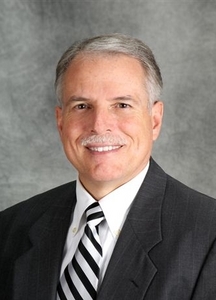
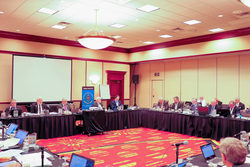 Director Tom Abernethy, W3TOM; Central Division Director Kermit Carlson, W9XA; Roanoke Division Director Bud Hippisley, W2RU; New England Division Director Fred Hopengarten, K1VR, and Great Lakes Division Director Dale Williams, WA8EFK. The Executive Committee addresses and makes decisions regarding ARRL business that may arise between scheduled Board meetings.
Director Tom Abernethy, W3TOM; Central Division Director Kermit Carlson, W9XA; Roanoke Division Director Bud Hippisley, W2RU; New England Division Director Fred Hopengarten, K1VR, and Great Lakes Division Director Dale Williams, WA8EFK. The Executive Committee addresses and makes decisions regarding ARRL business that may arise between scheduled Board meetings.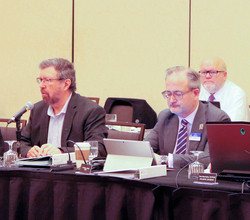
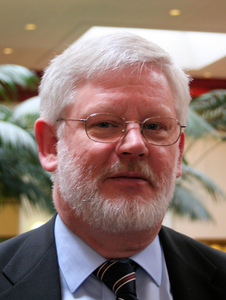
.jpg)
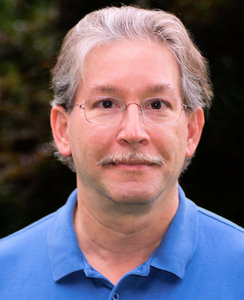 The ARRL President's Award to David H. Bernstein, AA6YQ, in recognition of "exemplary, outstanding, and continuing service" to ARRL and its members as part of the ARRL Logbook of The World team. Bernstein was a charter member of the ARRL Logbook Committee and a "founding, influential, and devoted member" of the Committee on Communication with ARRL Members.
The ARRL President's Award to David H. Bernstein, AA6YQ, in recognition of "exemplary, outstanding, and continuing service" to ARRL and its members as part of the ARRL Logbook of The World team. Bernstein was a charter member of the ARRL Logbook Committee and a "founding, influential, and devoted member" of the Committee on Communication with ARRL Members.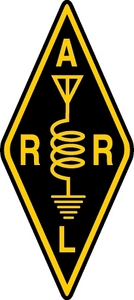 Band Planning Committee Chair Mike Raisbeck, K1TWF, will moderate the group, which will focus on the ARRL HF Band Planning Committee's recommendations and other band-planning activities. Earlier this month, the ARRL HF Band Planning Committee
Band Planning Committee Chair Mike Raisbeck, K1TWF, will moderate the group, which will focus on the ARRL HF Band Planning Committee's recommendations and other band-planning activities. Earlier this month, the ARRL HF Band Planning Committee 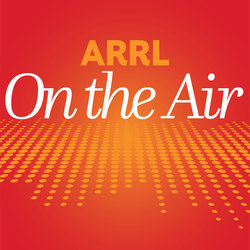 The second episode of ARRL's "On the Air" podcast is now available. Topics focus on building the ground-plane antenna featured in the first issue of On the Air magazine, a discussion of open-wire feed lines, and an interview with a relatively new public service volunteer. New "On the Air" podcast episodes are available each month.
The second episode of ARRL's "On the Air" podcast is now available. Topics focus on building the ground-plane antenna featured in the first issue of On the Air magazine, a discussion of open-wire feed lines, and an interview with a relatively new public service volunteer. New "On the Air" podcast episodes are available each month.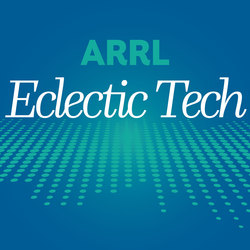 The inaugural episode of ARRL's new "Eclectic Tech" podcast is now available. The first episode includes a discussion of amateur radio activity on the Qatar-OSCAR 100 satellite, an interview with Assistant ARRL Lab Manager Bob Allison, WB1GCM, about handheld transceiver testing at Dayton Hamvention and other conventions, and an interview with Carl Luetzelschwab, K9LA, about propagation conditions.
The inaugural episode of ARRL's new "Eclectic Tech" podcast is now available. The first episode includes a discussion of amateur radio activity on the Qatar-OSCAR 100 satellite, an interview with Assistant ARRL Lab Manager Bob Allison, WB1GCM, about handheld transceiver testing at Dayton Hamvention and other conventions, and an interview with Carl Luetzelschwab, K9LA, about propagation conditions.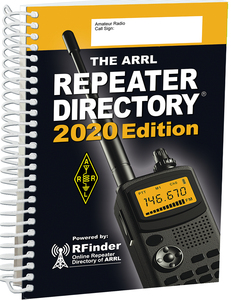 updated more often. With 21,000 listings, it's the most complete printed directory of on-the-air repeaters, covering repeater systems throughout the US and Canada.
updated more often. With 21,000 listings, it's the most complete printed directory of on-the-air repeaters, covering repeater systems throughout the US and Canada.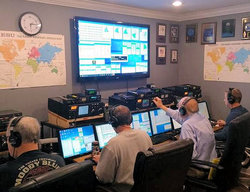 enthusiasts to enjoy the thrill of working some new DX entities.
enthusiasts to enjoy the thrill of working some new DX entities.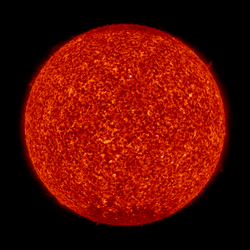 Predicted planetary A index is 5 on February 13 - 16; 8 on February 17 - 20; 5 on February 21 - 24; 10 on February 25 - 26; 5 on February 27 - 29; 8 on March 1 - 3; 5 on March 4 - 22; 10 on March 23 - 24; 5 on March 25 - 27, and 8 on March 28.
Predicted planetary A index is 5 on February 13 - 16; 8 on February 17 - 20; 5 on February 21 - 24; 10 on February 25 - 26; 5 on February 27 - 29; 8 on March 1 - 3; 5 on March 4 - 22; 10 on March 23 - 24; 5 on March 25 - 27, and 8 on March 28.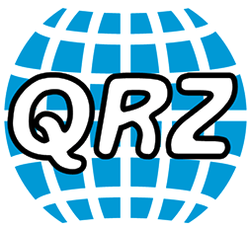 (2FA) for its registered users, which would secure a user's password on the site. The site introduced two-factor authentication last June, and the verified member program later.
(2FA) for its registered users, which would secure a user's password on the site. The site introduced two-factor authentication last June, and the verified member program later. ask for essay responses. The deadline for initial submissions is April 30, 2020. Applicants may amend their applications until May 7.
ask for essay responses. The deadline for initial submissions is April 30, 2020. Applicants may amend their applications until May 7..jpg) The FCC has invited comments on a Notice of Proposed Rule Making (NPRM) in
The FCC has invited comments on a Notice of Proposed Rule Making (NPRM) in 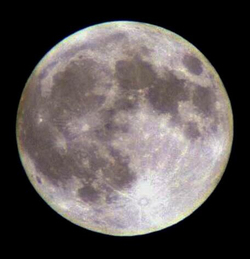 Successful 47 GHz Amateur Radio Moonbounce Test Reported. Mitsuo Kasai, JA1WQF, successfully decoded a 47 GHz signal bounced off the moon on February 10 by Al Ward, W5LUA. More tests are planned. Ward posted news of the achievement on the Moon-Net email reflector. "These were one-way tests, with only me transmitting," he said in his
Successful 47 GHz Amateur Radio Moonbounce Test Reported. Mitsuo Kasai, JA1WQF, successfully decoded a 47 GHz signal bounced off the moon on February 10 by Al Ward, W5LUA. More tests are planned. Ward posted news of the achievement on the Moon-Net email reflector. "These were one-way tests, with only me transmitting," he said in his .jpg)
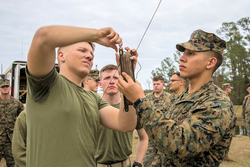 US Marines with Information Group II Marine Expeditionary Force (II MIG)
US Marines with Information Group II Marine Expeditionary Force (II MIG) .jpg) Initial reports indicate considerable interest among amateurs in tracking and capturing data from the newly deployed HuskySat-1. The satellite, designed at the University of Washington, was launched to the International Space Station last November and subsequently deployed into a higher orbit from the ISS on January 31, and began telemetry transmissions on 435.800 MHz. HuskySat-1's 1,200 bps BPSK beacon is active and decodable with the latest release of AMSAT's
Initial reports indicate considerable interest among amateurs in tracking and capturing data from the newly deployed HuskySat-1. The satellite, designed at the University of Washington, was launched to the International Space Station last November and subsequently deployed into a higher orbit from the ISS on January 31, and began telemetry transmissions on 435.800 MHz. HuskySat-1's 1,200 bps BPSK beacon is active and decodable with the latest release of AMSAT's 







